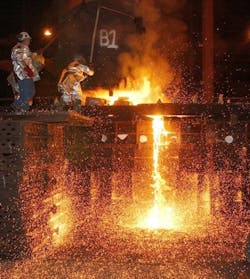Fortum, H2 Green Steel forging ahead with Hydrogen production in Sweden
Finnish energy group Fortum has secured a contract to supply carbon-free electricity to H2 Green Steel’s facility in northern Sweden.
Headquartered in Stockholm, H2 Green Steel aims to accelerate the decarbonization of the steel industry using green hydrogen.
The partnership allows H2 Green Steel to procure Fortum’s carbon-free electricity on a short and long-term basis for its green steel operations in Boden. The companies plan to strengthen their cooperation further through long-term power purchase agreements (PPAs).
“The decarbonization of industrial processes is a fundamental next step towards carbon neutrality,” said Rikard Dagerbäck, Sales Manager & Strategic Customer Director, Fortum. “We believe that the complex nature of electrification and hydrogen projects at scale require cross-sectoral partnerships as well as large amounts of clean energy.”
The frame agreement includes two deals for 2.3 TWh per year: an index-based PPA of 1.3 TWh annually from 2026 with a five-year hedging horizon, and a fixed price PPA of 1 TWh for up to nine years from 2027.
H2 Green Steel’s plant in Boden will generate green hydrogen using a 700-MW to 800-MW electrolyzer, which will reduce iron ore to sponge iron and feed the steel production. The plant is expected to produce an annual volume of 2.5 million tons of green steel in the initial phase, with production ramping up to about 5 million tons in the second phase. The plant is expected to begin operations in 2025.
Other manufacturing firms slowly working to H2 use within their processes include Unilever, which last year vowed to create a demonstration plant utilizing 100-percent hydrogen to fire a boiler in the household goods manufacturing segment.
Swedish consumer goods company Essity earlier this month announced that it has achieved CO2 emission-free tissue production using renewable hydrogen. The company says the milestone was achieved as part of a pilot conducted at its facility in Mainz-Kostheim, Germany.
The pilot, which was started in the second half of 2021, utilized renewable hydrogen as a final building block to replace natural gas in the hood dryer of the papermaking process, resulting in a CO2-free production process for tissue, Essity notes.
The breakthrough was made possible through the company’s efficiency programs and electrification using renewable energy






